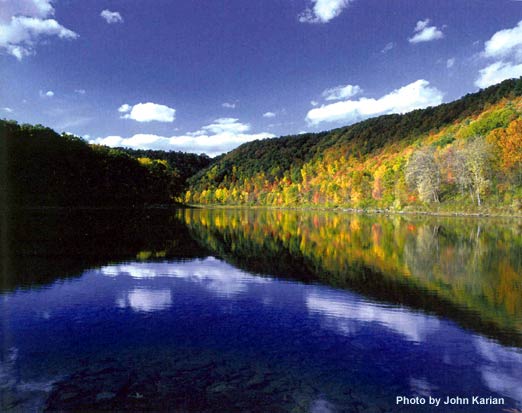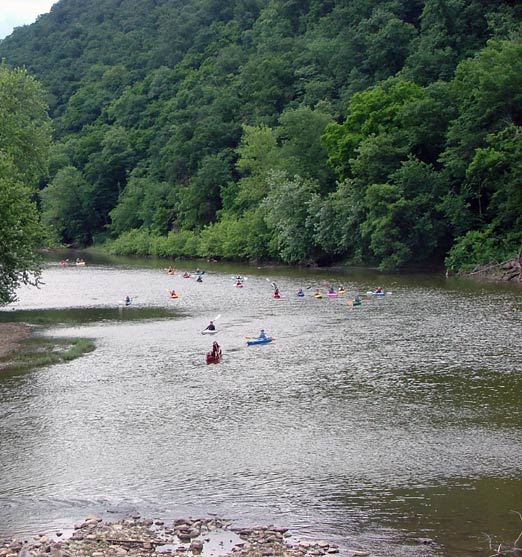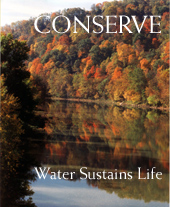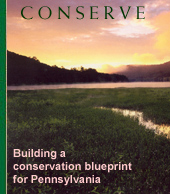|
A Long-Term Commitment to Freshwater Conservation
When the Western Pennsylvania Conservancy launched the Watershed Assistance Center in 2001, the organization understood the need to engage and support local communities, primarily through grassroots conservation groups, if it were to have true success in improving local conservation practices.

In 2006, five years later, the Watershed Assistance Center changed its name to the Freshwater Conservation Program to more accurately reflect WPC’s mission, and is positioning staff to work, and often live, in key watershed communities. This shift of staff is occurring to help the organization implement freshwater conservation protection and restoration projects that best represent the needs and issues of local watershed conservation. As it has from the beginning, the program will continue to provide technical assistance to local watershed organizations, but most of the work undertaken will be guided by WPC’s Conservation Blueprint, which highlights areas in need of critical attention to achieve positive conservation outcomes.
“We know that by working at the grassroots level and empowering local groups, we can be successful at solving problems and recognizing opportunities that will help us protect or restore regional watersheds,” said Nick Pinizzotto, senior director of watershed programs. “Western Pennsylvania has some of the most biodiverse, globally significant freshwater resources in the world. We need to protect these areas while, at the same time, work to improve watersheds that, with a little work, could flow as they did more than a hundred years ago.” Although the Freshwater Conservation Program will be working at the local level to protect and restore important conservation targets, one eye will always be focused on the bigger picture of watershed conservation in the region.
The Allegheny River offers examples of both pristine and degraded conditions. The upper Allegheny River offers clusters of islands, deep slow eddies, shallow riffles and long runs. Hours can be spent drifting by shaded banks, along steep forested valley slopes and under foraging bald eagles. A good indicator of a watershed’s health is the number of pollution-sensitive species that inhabit it. Little Mahoning Creek in Indiana County flows freely into Mahoning Creek, then eventually confluences with the middle Allegheny River near Templeton, Armstrong County. Within the Little Mahoning resides a healthy population of freshwater mussels. Move farther downstream to Mahoning Creek and eventually the Allegheny River, and the mussel population disappears. Drainage from unregulated coal mines excessive sediment from agricultural operations and polluted discharges from industrial sites have left sections of the middle and lower Allegheny River watershed in a degraded state.
The example of Little Mahoning Creek represents an opportunity for the WPC to reconnect this historic mussel population with the Allegheny River. Although this would be an effort of regional significance, the overall success of the project will lie with work done and relationships built at the grassroots level. In this case, an extensive outreach and restoration effort involving local farmers would be undertaken to restore sections of the watershed, while providing the groundwork for future protection efforts.
The WPC has a long history with the Allegheny River, having protected nearly 20,000 acres of neighboring shorelines and valleys. Most of that land has been conveyed to state and federal public lands managers. The WPC continues to hold 242 acres, including two islands and one floodplain forest, and has conservation easements on 11,305 acres in and around Venango County. Within the Allegheny River watershed, WPC has targeted 550 miles of river and tributary ecosystems for conservation.
“You don’t get into this line of work if you’re looking for instant gratification,” Pinizzotto said. “ What we’re doing now may not have a significant impact in some cases for 20 to 30 years. When my staff and I retire, the people who move into our positions will hopefully be talking about preserving what we’ve done in our time here.”

The Juniata River watershed system has similar stresses from agriculture and sedimentation as the lower Allegheny River. Most of the forestland in the Juniata watershed exists on or near the mountain ridges. Agriculture is generally confined to the valley bottoms and it is this area that influences the biodiversity of the region. The WPC has targeted more than 50 miles of important stream ecosystems, including an important large creek (Aughwick Creek) and medium-sized river (Raystown Branch of the Juniata River).
|
|








